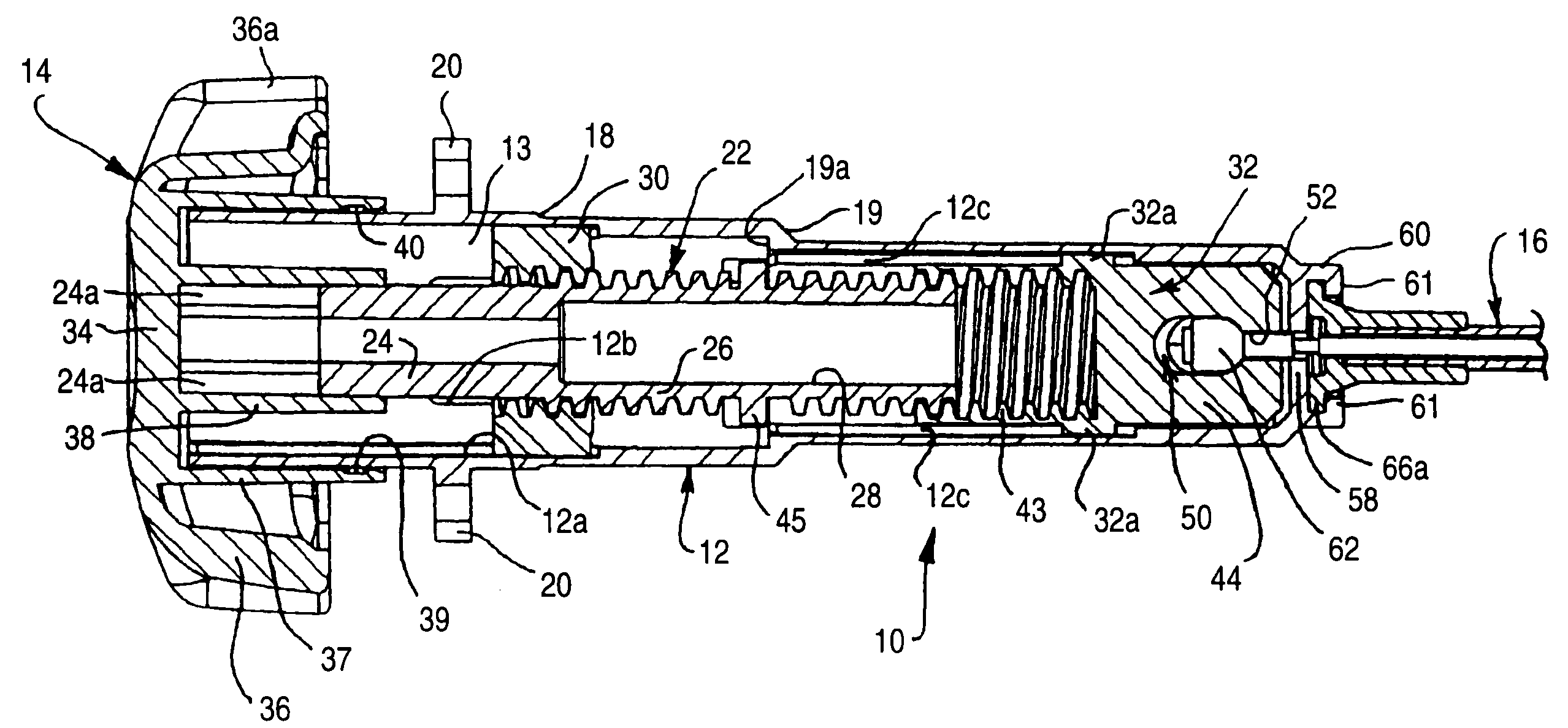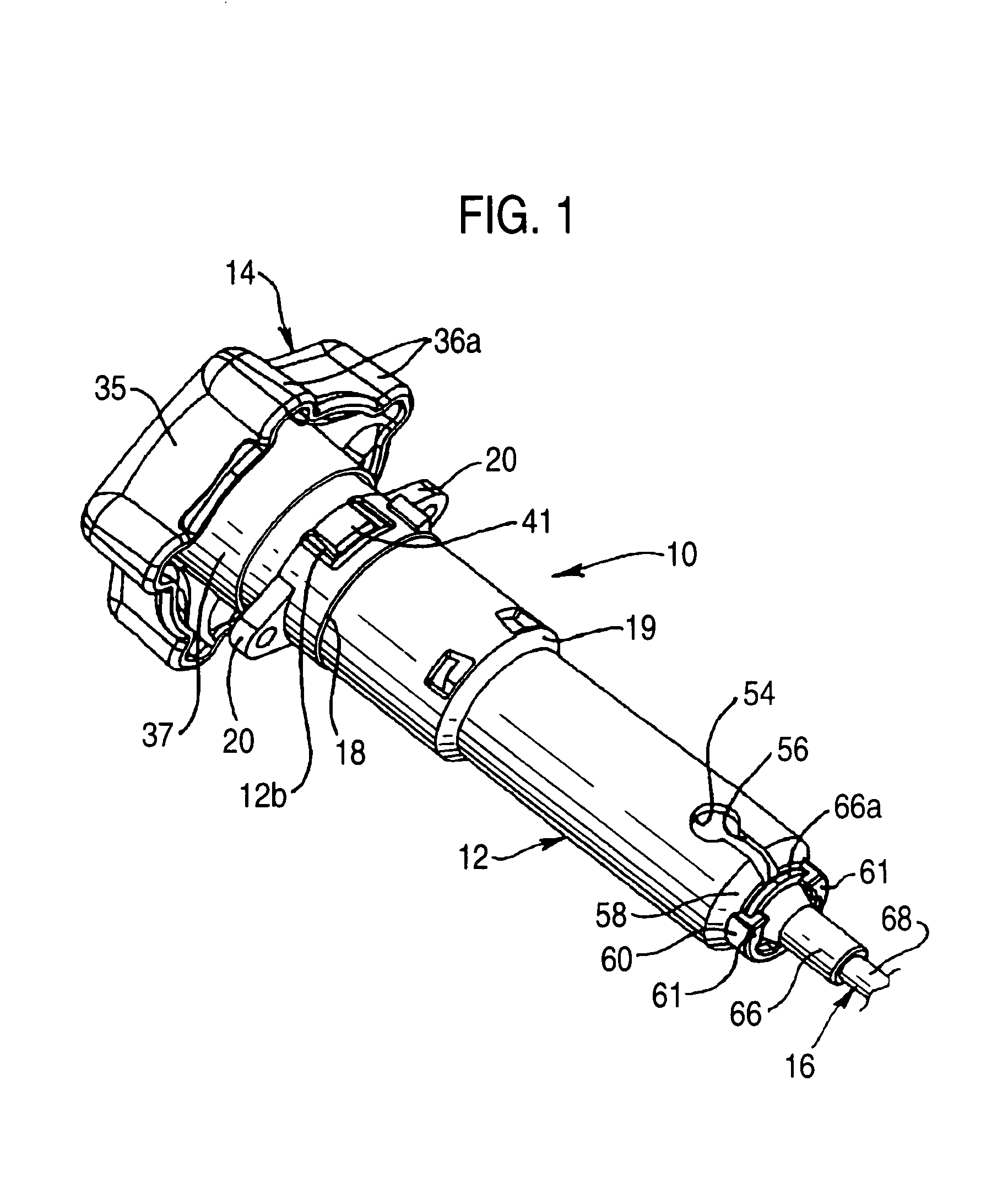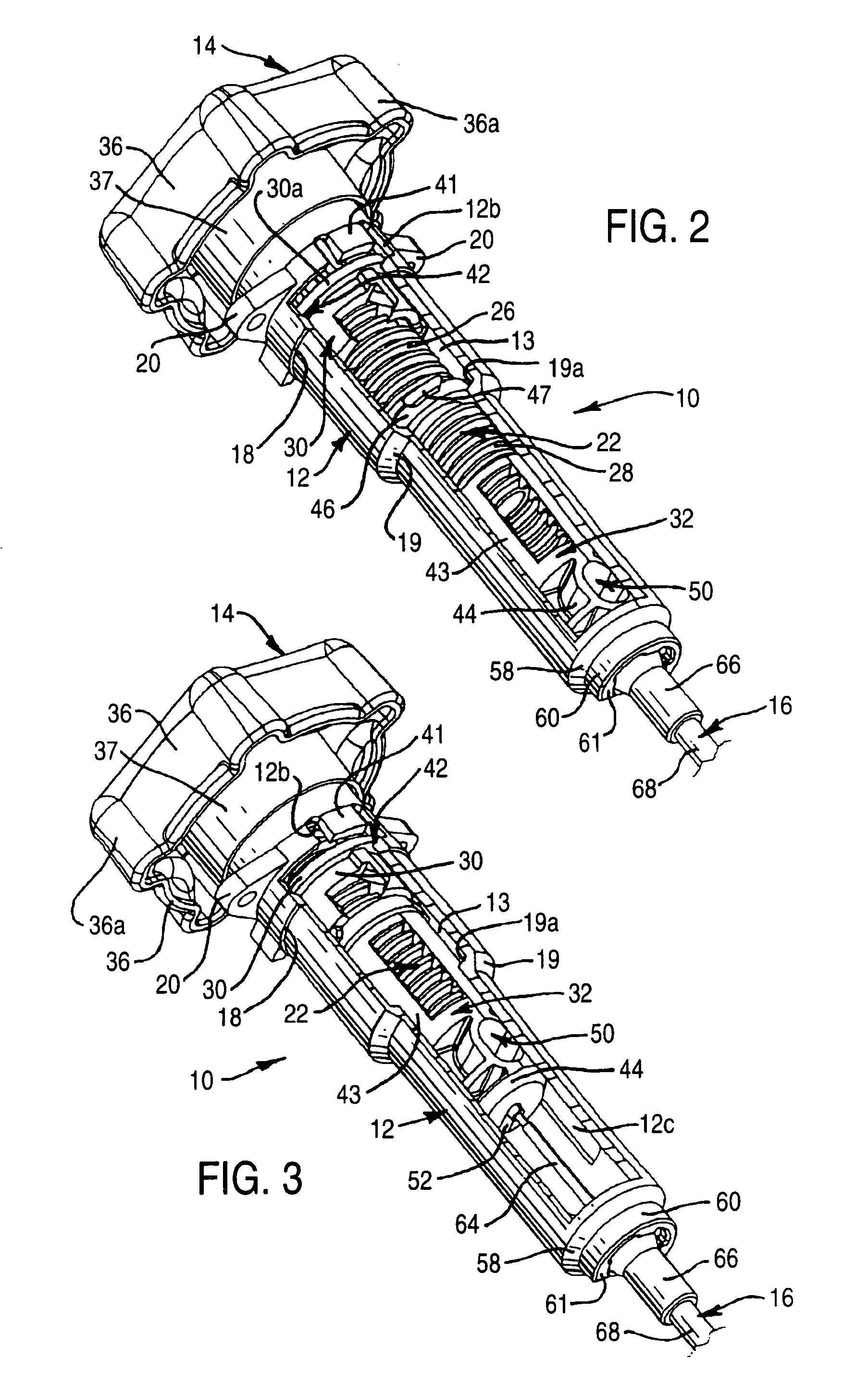Cable actuator for lumbar support
a cable actuator and lumbar support technology, applied in the direction of shafts, mechanical control devices, controlling members, etc., can solve the problems of complicated coupling and uncoupling of the actuator and the cable system, and achieve the effect of preventing lateral displacement of the spindle and minimising the risk of the spindl
- Summary
- Abstract
- Description
- Claims
- Application Information
AI Technical Summary
Benefits of technology
Problems solved by technology
Method used
Image
Examples
Embodiment Construction
[0052]With reference to FIGS. 1 to 5, the actuator 10 shown therein has an elongate cylindrical housing 12, of circular cross-section, which has a handle 14 at one end and receives one end of a Bowden cable system 16 at the other end. From its first end, at which handle 14 is provided, housing 12 defines a passage 13 which has a maximum diameter through to a first step 18, an intermediate diameter from step 18 to a second step 19, and a minimum diameter from step 19 through to the second end through which system 16 is received. Adjacent to handle 14, housing 12 has two diametrically opposed lugs 20 by which actuator 10 is able to be mounted on a suitable support, such as a side frame of a vehicle seat. In the context of a vehicle seat, the end of system 16 remote from actuator 10 may be connected to an adjustable device to be adjusted or actuated through system 16 by actuator 10. The device at the remote end may, for example, be a lumbar support mounted within the seat-back.
[0053]As...
PUM
 Login to View More
Login to View More Abstract
Description
Claims
Application Information
 Login to View More
Login to View More - R&D
- Intellectual Property
- Life Sciences
- Materials
- Tech Scout
- Unparalleled Data Quality
- Higher Quality Content
- 60% Fewer Hallucinations
Browse by: Latest US Patents, China's latest patents, Technical Efficacy Thesaurus, Application Domain, Technology Topic, Popular Technical Reports.
© 2025 PatSnap. All rights reserved.Legal|Privacy policy|Modern Slavery Act Transparency Statement|Sitemap|About US| Contact US: help@patsnap.com



